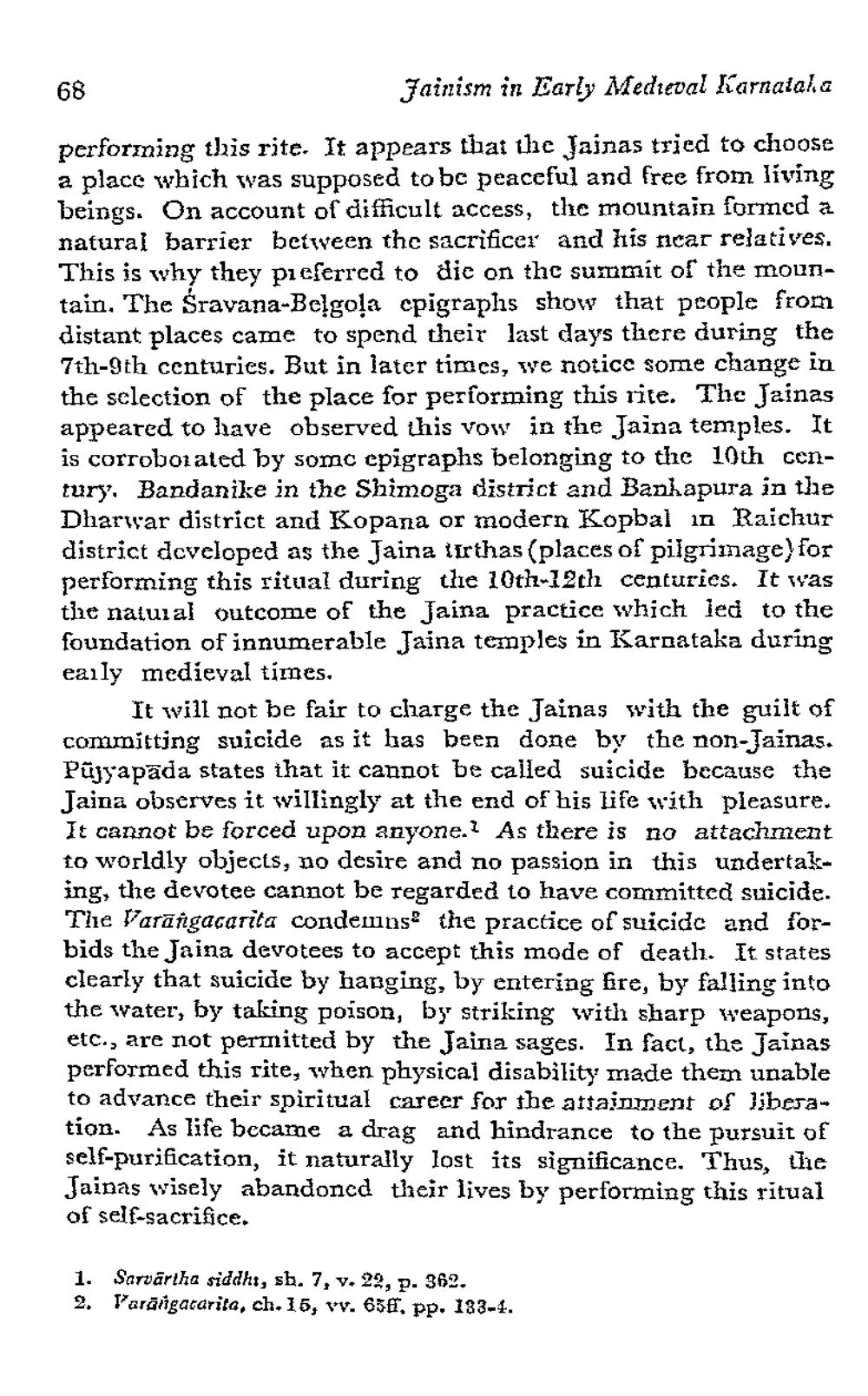________________
68
Jainism in Early Medieval Karnataka
perforining this rite. It appears that the Jainas tried to choose a place which was supposed to be peaceful and free from living beings. On account of difficult access, thc mountain formed a natural barrier between the sacrificer and his ncar relatives. This is why they preferred to dic on thc summit of the mounitain. The Sravana-Belgola cpigraphs show that people from distant places came to spend their last days there during the 7th-9th centuries. But in later times, we notice some change in the selection of the place for performing this rite. The Jainas appeared to have observed this vow in the Jaina temples. It is corroborated by somc cpigraphs belonging to the 10th century. Bandanike in the Shimoga district and Banhapura in the Dharwar district and Kopana or modern Kopbal in Raichur district developed as the Jaina tirthas (places of pilgrimage) for performing this ritual during the 10th-12th centuries. It was the natural outcome of the Jaina practice which led to the foundation of innumerable Jaina temples in Karnataka during early medieval times.
It will not be fair to charge the Jainas with the guilt of committing suicide as it has been done by the non-Jainas. Pujyapada states that it cannot be called suicide because the Jaina observes it willingly at the end of his life with pleasure. It cannot be forced upon anyone.? As there is no attachment to worldly objects, po desire and no passion in this undertaking, the devotee cannot be regarded to have committed suicide. The Varāngacarita condemns the practice of suicide and forbids the Jaina devotees to accept this mode of death. It states clearly that suicide by hanging, by entering fire, by falling into the water, by taking poison, by striking with sharp weapons, etc., are not permitted by the Jaina sages. In fact, the Jainas performed this rite, when physical disability made them unable to advance their spiritual career for the attainment of liberation. As life became a drag and hindrance to the pursuit of self-purification, it naturally lost its significance. Thus, the Jainas wisely abandoned their lives by performing this ritual of self-sacrifice.
1. 2.
Sarvārtha siddhi, sh. 7, v. 22, p. 362. 'arängacarita, ch.15, vv. 63, pp. 133-4.




